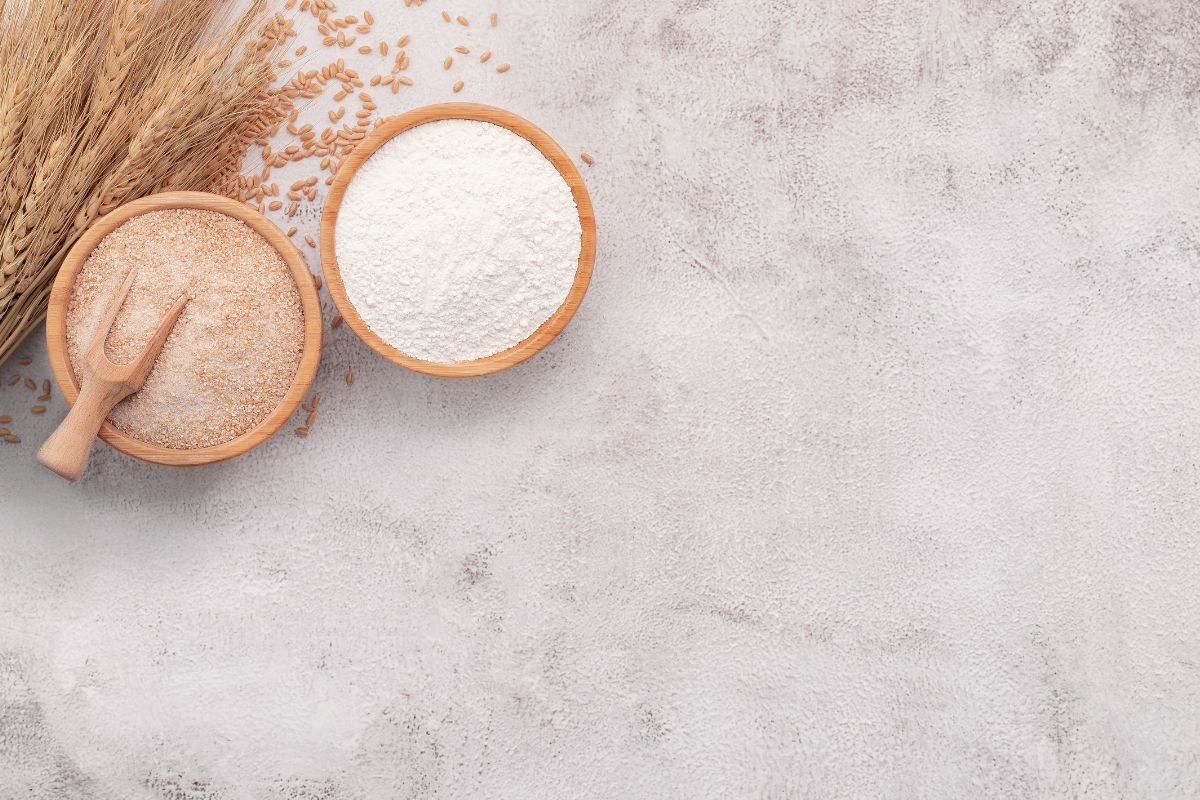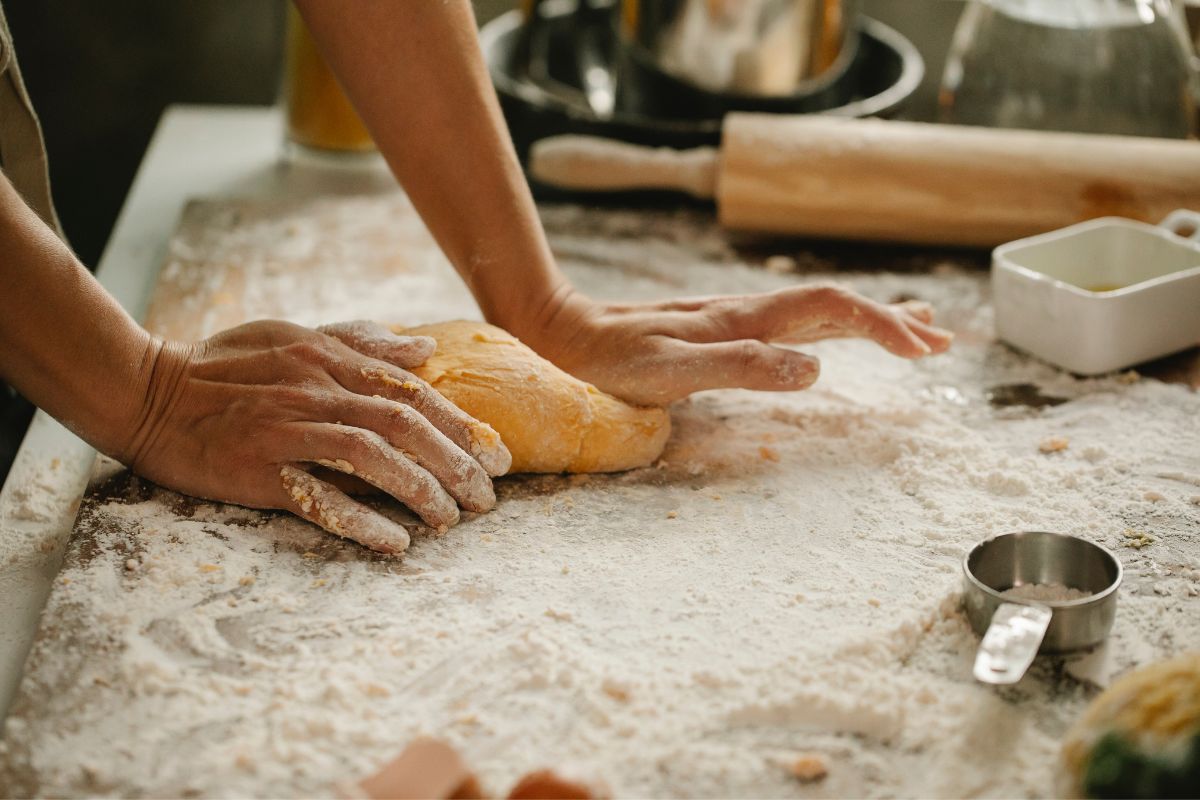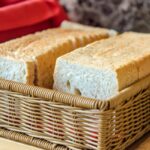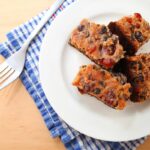There may be a time when you discover that you have no pastry flour in your kitchen just when you need it.
But don’t worry, we are going to help you find out how to make pastry flour from other ingredients that you may have.

And there is more than one option, so you’ll definitely find one method that works for you.
What Is Pastry Flour?
Pastry flour is made from soft wheat and contains between 9-12% protein.
This compares to bread flour which can be anything from 12-16% and cake flour which is about 7-9%. All purpose flour can range between 10-12%.
The level of protein in a flour is related to the amount of gluten present in it.
Gluten is what makes dough elastic so the lower the protein content the lighter the flour will be. Therefore a cake flour is the lightest with bread flour being the heaviest.
Pastry flour lies in between the two. It has enough gluten to make dough stretchy but is not so gluten rich that it makes it heavy.
This flour is used, as you might expect, to make pastries but also cookies, biscuits and pie crusts.
However, you will seldom find pastry flour in a recipe that has yeast as a leavening agent.
This is because its protein content is too low to make the elasticity that yeast baked goods need.
Homemade Pastry Flour
So, what do you do if you have run out of pastry flour at home and can’t get to the store? Luckily there are a couple of options for making substitutes for pastry flour.
Cake Flour & All Purpose Flour Combination
The first option for a substitute for pastry flour involves all purpose flour and cake flour.
Ingredients
- 2 cups cake flour
- 4 cups unbleached all purpose flour
Method
- Sift or mix the two flours together until they are well combined.
- If you are not using all of the substitute pastry flour immediately you should store it in an airtight container in a cool, dry place until you are ready to use it.
It doesn’t matter how you measure the two flours, whether by weight or by volume as the ratio will still be the same at 1:2.
Cornstarch & All Purpose Flour Combination
What happens if you don’t have any cake flour either? Well don’t worry, there’s another way to make homemade pastry flour even without cake flour. You use cornstarch instead.
Ingredients
- Cornstarch or arrowroot
- All purpose flour
Method
- In a one-cup measure put two teaspoons of cornstarch or arrowroot.
- Fill the cup up to the top with all purpose flour and level off to remove the excess flour.
- Sift the two ingredients together to make sure they are well incorporated and combined.
If you don’t have any cornstarch or arrowroot then you can, in a pinch, use all purpose flour in place of pastry flour. The difference in protein content is not so big that it will be a disaster, and hopefully it won’t have a huge impact on your recipe.
What Is Pastry Flour Used For?

Pastry flour is versatile and can be used for many things such as biscuits, scones, pies, tarts and soft cookies.
And of course it makes perfect pastries and pie crusts.
Pies & Tarts
Using pastry flour for pies and tarts gives them a lighter and buttery texture.
By using this flour instead of all purpose flour the pastry will be less likely to be tough or chewy.
Pastry flour is not just limited to sweet tarts either and can be used equally well for savory pies and tarts as well.
Because pastry flour makes a softer dough you may need to chill it for longer, as softer dough requires longer for chilling.
Soft Cookies
Soft and fluffy cookies are easier to achieve with pastry flour as it is lighter and makes less chewy dough.
If you want crisp and crunchy cookies then all purpose flour is ideal but for the more tender cookie use pastry flour.
Scones & Biscuits
Pastry flour is perfect for making light, fluffy scones. That is because the low protein and hence low gluten content produces a lighter texture.
Biscuits made with pastry flour are also more tender and soft.
Will Pastry Flour Substitute Taste The Same?
Although there are many delicious things that you can bake with pastry flour that you have made yourself, you may wonder if the results will be the same.
By substituting pastry flour for a combination of all purpose flour and cake flour you are using an approximation of what the same quantity of pastry flour would produce.
In other words, the end baked result from 100% pastry flour may not be exactly the same as a substitute.
As long as you are aware of this fact then there will be no surprises when it comes to baking with a pastry flour substitute.
Measuring Flour
One of the most important things to remember when baking with any flour is that accurate measurements are key.
Using the correct way to measure flour can be the difference between good and great baking.
So how do you properly measure flour? Although it may be tempting to dig your measuring cup into the flour and scoop out a load this is not the way to do it.
This will result in you having too much flour which is now packed hard into the measuring cup.
Stir the flour to loosen it and then gently spoon the flour into the measuring cup without packing it down.
When it is full, using the back of a knife level it gently to fill in any gaps and then with a quick motion swipe off the excess from the top.
You will now have an accurate measurement of flour.
In Conclusion
We hope this guide to how to make pastry flour has been helpful for you and given you some inspiration for how to create a suitable substitute.
We wish you happy baking.
- How To Reheat A Cheesesteak - November 5, 2023
- What Are Three Must Have Kitchen Knives? - September 22, 2023
- How To Protect Edges Of Pie Crust - June 15, 2023








